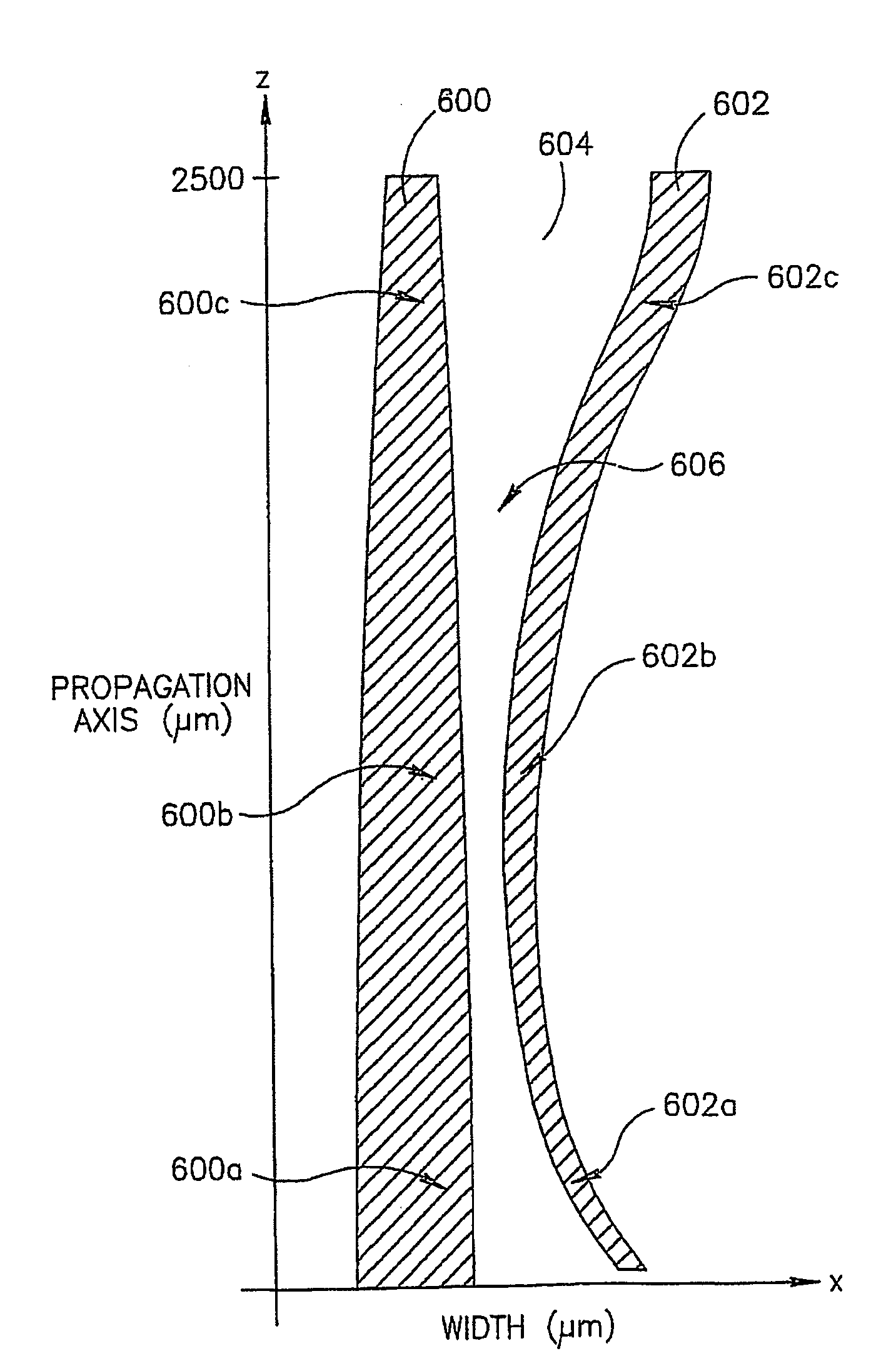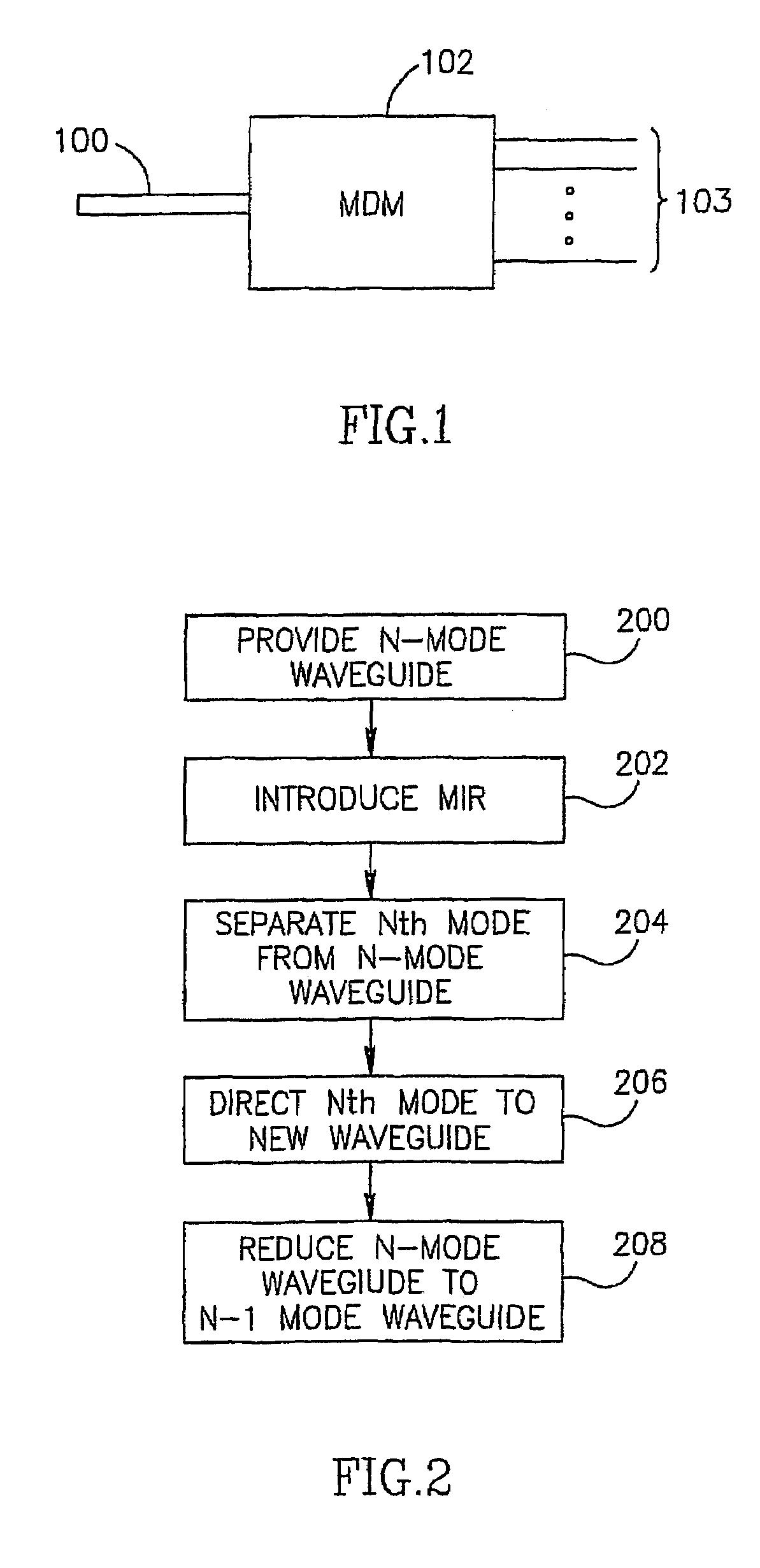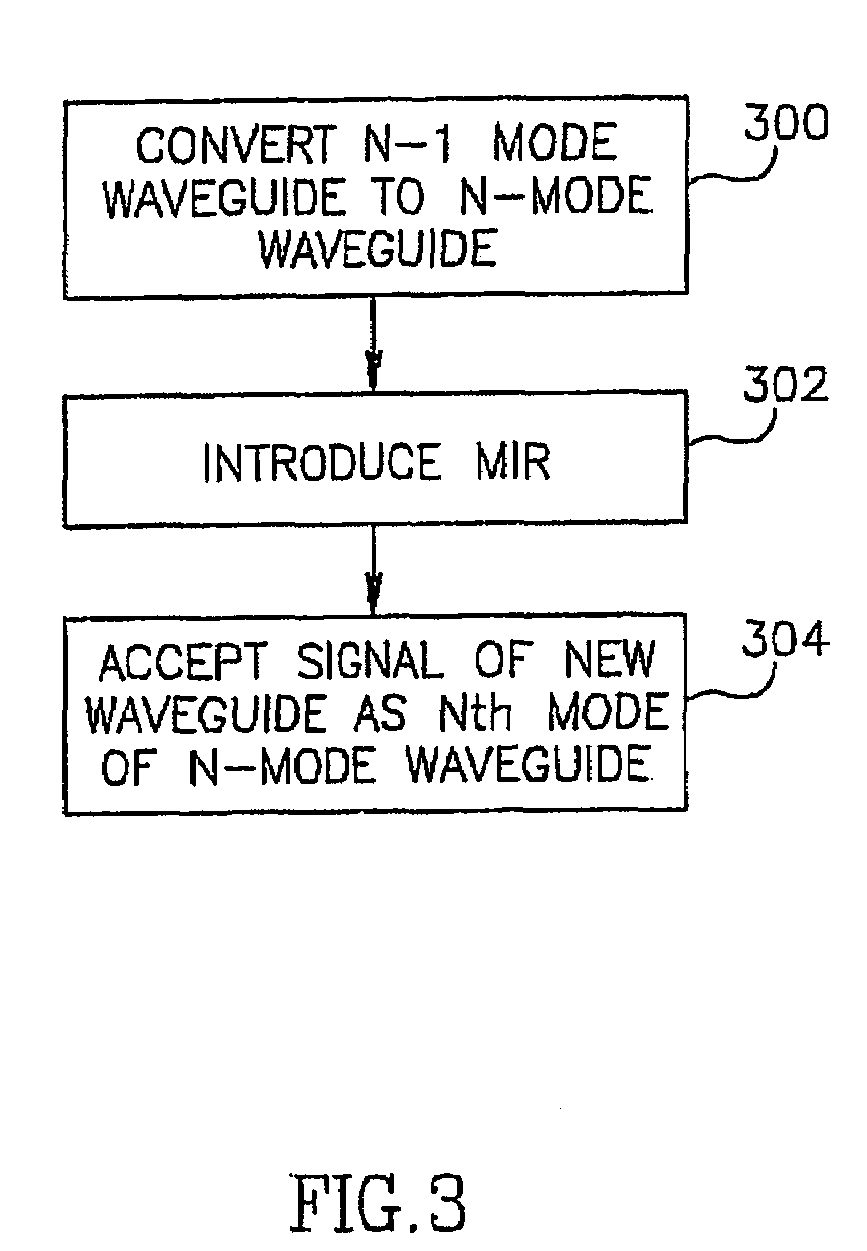Method and apparatus for optical mode division multiplexing and demultiplexing
a technology of optical mode and multi-mode, applied in the field of integrated optics, can solve the problems of poor separation between the divided modes, the sensitivity of fabrication parameters, and the difficulty of coupling modes residing in different waveguides, and achieve coupling and/or cross talk between modes
- Summary
- Abstract
- Description
- Claims
- Application Information
AI Technical Summary
Benefits of technology
Problems solved by technology
Method used
Image
Examples
Embodiment Construction
[0018]In the following detailed description, numerous specific details are set forth in order to provide a thorough understanding of the invention. However, it will be understood by those of ordinary skill in the art that the present invention may be practiced without these specific details. In other instances, well-known methods, procedures, components and circuits may not have been described in detail so as not to obscure the present invention.
[0019]Embodiments of the present invention enable mode division multiplexing and demultiplexing. In mode division multiplexing in accordance with embodiments of the invention, signals from a given number, N, of single-mode (SM) waveguides may be combined into a multi-mode signal carried by single N-mode multi-mode (MM) waveguide, wherein each order mode carries a signal associated with a particular one of the SM waveguides. In mode division demultiplexing in accordance with embodiments of the invention, the N signals from a single N-mode mul...
PUM
 Login to View More
Login to View More Abstract
Description
Claims
Application Information
 Login to View More
Login to View More - R&D
- Intellectual Property
- Life Sciences
- Materials
- Tech Scout
- Unparalleled Data Quality
- Higher Quality Content
- 60% Fewer Hallucinations
Browse by: Latest US Patents, China's latest patents, Technical Efficacy Thesaurus, Application Domain, Technology Topic, Popular Technical Reports.
© 2025 PatSnap. All rights reserved.Legal|Privacy policy|Modern Slavery Act Transparency Statement|Sitemap|About US| Contact US: help@patsnap.com



